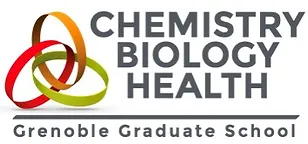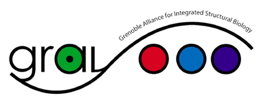Switches at the chromatin
While maintainers of chromatin states have largely been untangled,
the precise sequence of events enabling chromatin state switches from transcriptionally repressive to permissive remains unclear. The SAND domain-containing factor ULTRAPETALA1 (ULT1) activates the expression of floral MADS genes via decrease in repressive H3K27me3 marks, and interacts with the ARABIDOPSIS TRITHORAX LIKE1 (ATX1) chromatin activator (Carles & Fletcher, 2009). In the past period,
we have unraveled the genome-wide effect of ULT1 and protein partners on chromatin marks, and the dynamics of chromatin landscapes in the developing flower. By genome-wide studies of chromatin dynamics, we found that changes in active marks may be pioneer for gene regulation, at the launching of developmental programs. We also have, with genetics and genome-wide approaches, positioned the ULT1 transcriptional regulator as a switch from an H3K27me3-repressed state to an active state, and vice-versa.
We further
aim at reaching a comprehensive, dynamic view of the epigenetic roadmap for development. While the evolutionary conserved H3K4me3, H3K27me3 and H3K36me3 chromatin marks are recognized since several decades as central to cell fates, their molecular functions in transcription remain unclear, mainly because conventional genetics brought only correlative insights. We thus assess their
causal effect on development and nuclear dynamics, and dissect the
molecular mechanisms of switch from one to the other.
Editing epigenetic modifications to rewire plant development
 REWIRE
REWIRE PRC, 2019-2023,
coord. C. Carles (Coll. M-E. Chabouté/A. Berr, IBMP Strasbourg).

ADR EUR CBH, 2023-2026

Labex M2 Fellowship, 2024
Permanent members: R. Blanvillain, G. Vachon, M. Le Masson.
PhD st.: Salim El Khoury,
M2 st.: Veronica-Astrid Morlacchi.
Recent data from us and others indicate that editing of histone amino acid residues induce drastic changes in plant architecture: Arabidopsis lines accumulating H3 mutated at K27 (H3K27A) or at K36 (H3K36M) display strong defects in plant size, flowering transition, stem elongation), while those accumulating H3K4A do not. We aim at pushing the strategy further by inducing precise
enzymatic editing of histone marks at H3K4, K27 or K36 residues. Our objectives are to
discover their precise impact on transcription and chromatin dynamics and to
rewire the development of plants to further modify their architecture at will. With epigenome editing coupled to in cyto imaging and in situ molecular analyses, we shall reach cause-effect resolution of histone mark functions.
Decrypting ULT1 molecular functions in gene expression switches

ChromSwitch PRC, 2023-2027,
coord. C. Carles (Coll. J. Kadlec, IBS Grenoble).

ADR Idex, 2021-2024
Permanent members: R. Blanvillain, G. Vachon, M. Le Masson.
PhD st.: Vangeli Geshkovski,
CDD Research Engineer: Laura Turchi.
We found that ULT1 counters PRC2 at hundreds of target genes and physically interacts with the CLF PRC2 sub-unit. This, together with the discovery that ULT1 activity is independent from the JMJ H3K27me3 demethylases, indicates that ULT1 may directly imped PRC2 activity. We also found that ULT1 activates hundreds of targets in common with the BRAHMA (BRM) nucleosome SWI/SNF remodeler and physically interacts with BRM and its homologue SPAYED (SYD). Such findings, added to previously discovered interaction with the ATX1 H3K4me3 deposer and RNA Pol II, provide
a unique case in eukaryotes of molecular connection between 2 antagonistic chromatin functions and put
ULT1 as a candidate scaffold for chromatin state switches.
Integrative study of ULT1 as a chromatin dual switch: Combining structural and functional studies, we want to resolve the molecular mechanism through which ULT1 switches chromatin states, sometime acting as a counteractor of PRC2 function, and sometimes as a PRC2 co-factor. For this, we aim at outlooks from the atomic, molecular, cellular and
in planta scales. We associate for this with J. Kadlec (IBS), specialist in biochemical, biophysical and structural analyses of chromatin complexes.
Via the “Partnership for Structural Biology”, we have access to platforms for high-throughput crystallogenesis, biostructural technologies and biophysics.
Interaction analyses between ULT1 and the BRM/SYD remodelers: We are further characterising the ULT1-BRM/SYD interactions using domain deletions, and analysing ChIP-seq and RNA-seq datasets to identify groups of co-regulated, bound genes. With loss- and gain-of-function lines we want to evaluate the overlap between ULT and BRM/SYD developmental pathways as well as BRM-ULT1 interdependency to bind and regulate chromatin.
Characterisation of ULT1 protein complexes: In order to better comprehend ULT1 activities, we identify novel interactors by TAP-MS on cell cultures and IP-MS on inflorescences, as well as proximity labelling (coll. K. Gasser, Univ Regensburg; K. Kaufmann, Univ. Berlin; EDyP Grenoble). We also will implement BioID approaches, that are now running in the team (see Nucleus-chloroplast bi-directional communication Axis, below).
All together, these investigations should allow decrypting a unique mechanism for switches in chromatin states.
Nucleus-chloroplast bi-directional communication
Chloroplast biogenesis: function, regulation and structure of the PEP complex and associated PAP proteins
 PAPPEPNetworksPRC, 2024-2028,
partnership PI R. Blanvillain (Coord.: D. Cobessi, IBS).
PAPPEPNetworksPRC, 2024-2028,
partnership PI R. Blanvillain (Coord.: D. Cobessi, IBS).
Permanent member: C. Carles.
Postdoc: TBA;
Engineer: TBA.
M2 st.: Ivan Cubillas
We showed that 5 PAPs are bi-localized in the nucleus and chloroplasts and can interact in the nucleus (BiFC, NMR), indicating that the nuclear PAPs may form a multi-functional complex. Our work on PAP8 indicates that chloroplast-to-nucleus movements may function in the orchestration of gene expression in the two compartments, for coordinated activity of their genomes. We aim at challenging this hypothesis and extending the scope of investigation to the 5 bi-localised PAP proteins to connect development and cell identity to metabolism and photo-autotrophy. We shall decipher the molecular function, atomic structure and sub-cellular mechanisms of the PAP individual proteins and complexes. These structure-function analyses are led with D. Cobessi (Structural biologist at IBS Grenoble) in a consortium of 19 researchers in 3 labs (LPCV, IBS, IGBMC Strasbourg). In this consortium, the LPCV partnership aims at
deciphering the role of the PAPs in the nucleus, what is their trafficking route and whether they support retrograde signaling. The potential nuclear sub-complex contains PAPs with signature domains (DNA binding domains in PAP5 and PAP8, SET methyltransferase domain in PAP7), which indicate a role in gene expression and/or chromatin modification. We aim at
(1) in planta purification and characterization of PAP complexes (by AP-MS and proximity labelling);
(2) uncoupling subcellular functions of the bi-localized PAPs using altered NLS or cTP (chloroplast Transit Peptide);
(3) functional analysis of nuclear PAPs (chromatin binding profiles, influence on chromatin marks, effect of PAP7 on histone methylation status); and
(4) assessing PAP trafficking from chloroplast to nucleus with a tag-based tracing system.